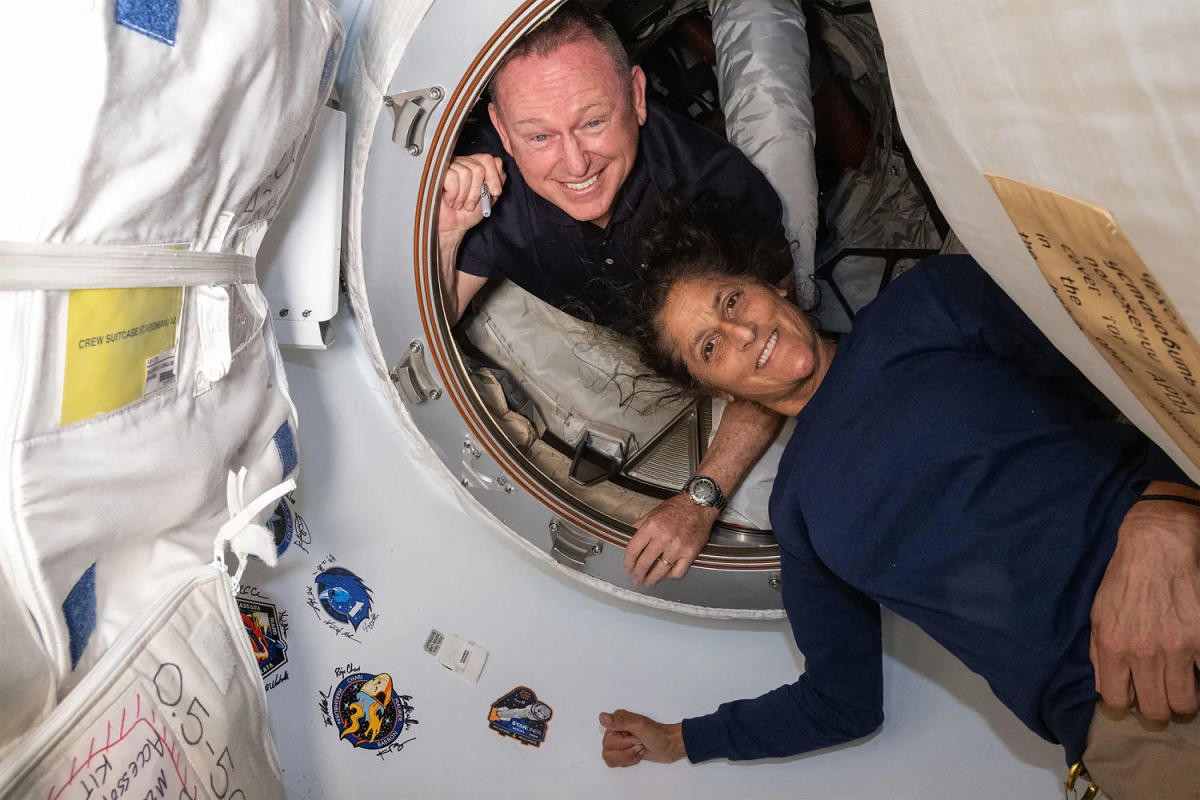NASA will call on SpaceX to bring home two astronauts who have been stuck on the International Space Station since early June after their Boeing spacecraft ran into several problems midflight, the agency said Saturday.
The decision for astronauts Butch Wilmore and Suni Williams to hitch a ride back to Earth on a SpaceX Crew Dragon capsule, rather than on the Boeing Starliner spacecraft that they rode into orbit, puts to rest months of speculation and tension within the space agency over how — and when — the two crew members could safely return. The mission was planned to last about eight days.
The Starliner drama has been a major setback for Boeing’s space ambitions, adding to years of struggle to get the capsule off the ground and keep up with rival company SpaceX. Even before Wilmore and Williams launched in June, the Starliner program was more than $1.5 billion over budget and years behind schedule.
Top NASA officials, including Administrator Bill Nelson, gathered Saturday in Houston to conduct a formal review based on the results of tests done in orbit and on the ground. The decision to go with SpaceX was subsequently announced in a news briefing held at NASA’s Johnson Space Center.
While the agency has finally settled on how to bring the astronauts back, their return trip will not be immediate. Instead, Wilmore and Williams will remain at the space station for about six more months before flying home in February.
NASA said it will free up two seats on an upcoming SpaceX launch, known as Crew-9, that will be taking a new rotation of space station crew members to the orbiting outpost. By transporting two astronauts instead of the planned four, Wilmore and Williams will be able to fly back in the open seats at the end of the Crew-9 mission in February.
The Crew-9 flight is currently scheduled to lift off on Sept. 24 from NASA’s Kennedy Space Center in Florida.
The beleaguered Starliner capsule, meanwhile, will journey back to Earth without a crew, according to NASA.
NASA’s uncertainty in recent weeks stood in stark contrast to the public messaging from Boeing. The aerospace company has said that tests done in orbit and on the ground indicated that the Starliner capsule was safe to bring the astronauts home.
Over the past month, Boeing officials have not taken part in news briefings hosted by NASA to discuss the Starliner mission. Boeing was publishing details of the flight’s status on the company’s website, but there have been no mission updates posted since Aug. 2. In that statement from earlier this month, Boeing said it “remains confident in the Starliner spacecraft and its ability to return safely with crew.”
Wilmore and Williams arrived at the space station on June 6. As they were approaching the orbiting outpost, five of Starliner’s thrusters malfunctioned, causing a nearly hourlong delay in the docking process. Separately, mission managers also detected helium leaking from the capsule’s propulsion system — an issue that was known prior to the spacecraft’s launch but appeared to worsen during the flight.
Engineers from NASA and Boeing spent weeks analyzing the problems using a test engine that was built for future Starliner flights. Mission managers also conducted two “hot fire tests” in space, which involved firing the capsule’s thrusters in short bursts while it remained docked at the space station.
Wilmore and Williams launched to the International Space Station on June 5 on the first crewed flight of Boeing’s Starliner capsule. The mission, which was meant to last just over a week, was a crucial test flight for Boeing, serving as the last major step before NASA could certify the Starliner spacecraft to ferry astronauts to and from the space station on a regular basis.
It’s unclear how NASA will proceed with the certification process now, including how the space agency will evaluate Starliner’s performance on the crewed test flight.
SpaceX, meanwhile, has been ferrying NASA astronauts to and from the International Space Station since 2020.
Both Boeing and SpaceX developed their space capsules as part of NASA’s Commercial Crew Program, an initiative that started in 2011 to support private companies in building new space vehicles to take astronauts to low-Earth orbit following the retirement of the agency’s space shuttles.
This is a developing story. Please check back for updates.
This article was originally published on NBCNews.com
